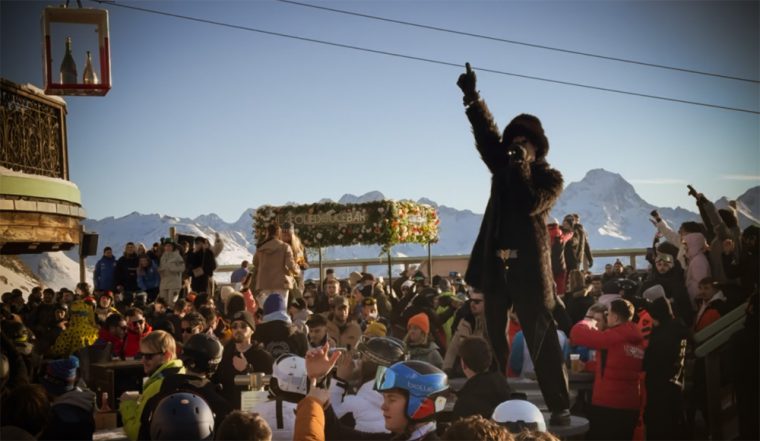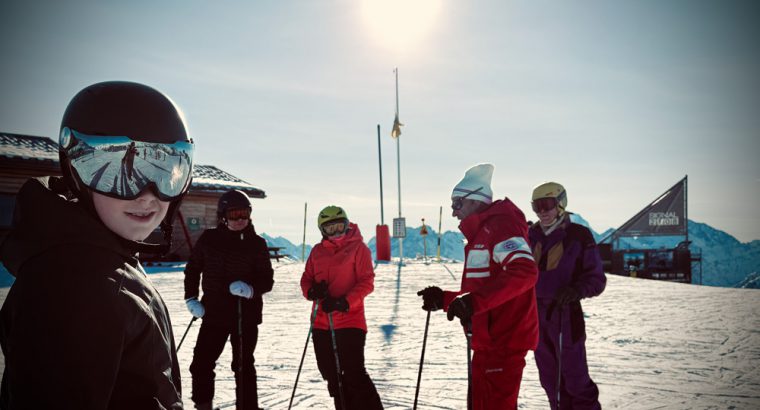WHITE WAR – remembering the heroes of the Alps.
On the centenary of The Great War, take a moment to remember those who fought for freedom in the places which are now our winter playgrounds.
Il fronte vertical
In June 1915, Italy joined the Allies and became embroiled in the “Third Front” of the Great War: aka the silent wars of the Dolomites.
The mountain men of Italy and Austria fought for control of the South Tyrol, across 250 miles of Alpine mountainside
At altitudes above 2000 metres, it became the highest mountain war that had ever been fought, earning the nickname ‘il fronte vertical’.
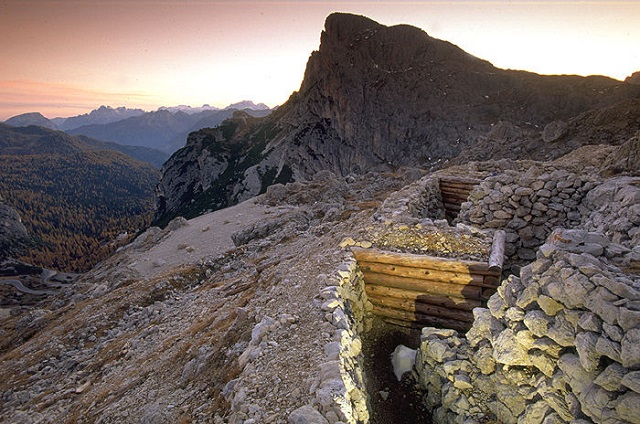
Lagazuoi trenches (near Cortina) where a lot of the conflict took place: Stefano Zardini, Lagazuoi Tourism
Profile: Sepp InnerKofler – from Mountain Guide to War Hero
Sepp InnerKofler was one of many locals who gave their lives defending the mountains they’d been born and raised in. Sepp’s passion for his homeland led him to become a locally renowned mountain guide. He joined the Austrian Army to defend the land of his forefathers, and is remembered as a level-headed soldier whose bravery in extreme conditions outshone his eventual tragic death.
On the night of the 4th July 1915, Sepp led a group of experienced local guides to overthrow the Italian stronghold on Monte Paterno (between Sexten and Cortina). Being so familiar with the area, they were able to climb the mountain in complete darkness; reports recall that amongst the gunfire, their silhouettes were seen by hundreds of soldiers across the area.
One account relates that Sepp, reaching the peak and hurling grenades over the summit wall, was knocked off the mountain to his death by a rock thrown down by Italian alpini. It’s thought more likely that Sepp was killed by gunshots but, however he met his end, the bravery in defending his homeland is still remembered locally today. Innerkofler was posthumously awarded the Gold Medal for his bravery and at the top of Monte Paterno, a monument commemorating his heroism can still be seen today >> from the top of the Cortina chairlift called “Son Forca – Forcella Staunies” look north-east to see the three battlement-like peaks.
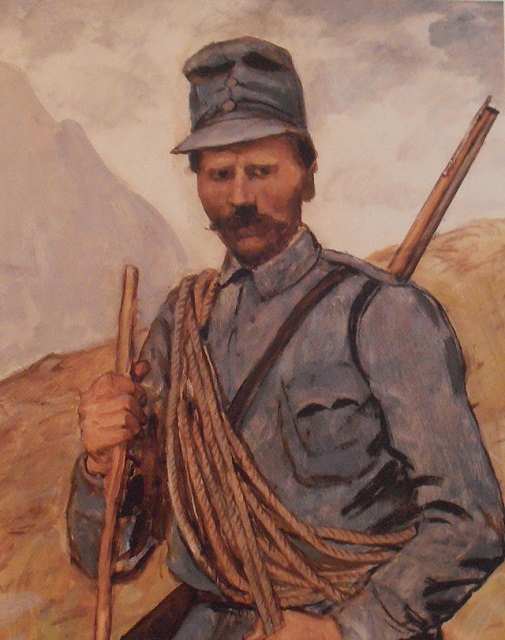
Painting of Sepp Innerkofler: Franz Defregger
The White War
Bullets and bombs were not the only threat facing the soldiers in the mountains: often the greatest foe was the brutal climate of the alpine winter. In temperatures as low as -30°C, the soldiers’ equipment would make the skiers of today shudder.
While we might squeeze an extra pair of socks into our ski boots on the frostiest days, troops in WW1 had to make do with stuffing straw into their cracked boots to defend against frostbite. Often wearing ordinary army issue uniforms, they had poor protection from the cold. Spare a thought for those brave souls, sleeping in icy trenches, the next time we retreat to a log-fired chalet at the end of a long cold day.
Perhaps the greatest threat was known as ‘the white death’ and it was these avalanches which are estimated to have killed over 60,000 soldiers. Without transceivers or probes, it was often impossible for survivors to find their buried friends.
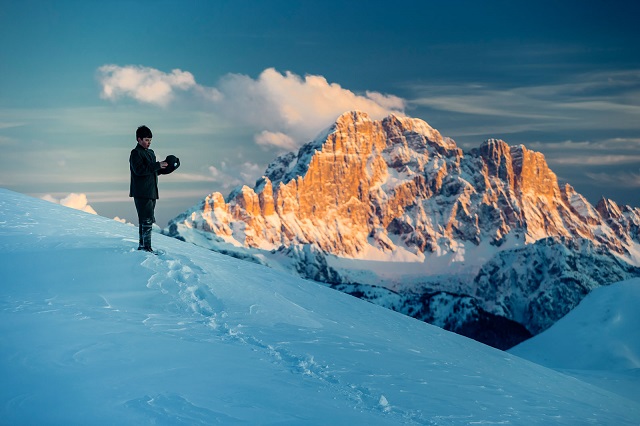
Young boy wearing replica uniform in the Dolomites: Diego Gaspari Bandion Photographs
Next time you sit alone on a windswept chairlift, take a minute’s silence to think of these men, at war in the mountains.
Lest we forget.
More… Follow their footsteps
The Lagazuoi Tunnels
Both Italian and Austrian troops dug an extensive network of tunnels which they used for mining, lookout positions, and access to other parts of the mountains. The Lagazuoi Tunnels are the most famous and the open air museum here lets you walk through these eerie remainders of the conflict. You can explore the tunnels around the Little Lagazuoi peak from a cable car lift in Passo Falzarego, a short drive from the popular ski resort of Cortina d’Ampezzo.
Vie Ferrate
As the war in the mountains dragged on, soldiers built ‘vie ferrate’ to aid the navigation of troops and supplies. These were permanent routes made from planks of wood and metal ladders nailed into the mountainside. Many of the original vie ferrate are still in place today, and more extensive routes have been built since for climbers in the summertime. A visit in the depths of winter will give you just a glimpse of how dangerous it was for soldiers out on the sub-zero mountain ridges.
Great War Tours
Amongst others, the Lagazuoi Tourist Office organises historical tours of the area. If you’re skiing in Arabba, Selva or Corvara, ‘The Great War Ski Tour’ takes you around the bases of iconic Dolomite summits like the Marmolada, Lagazuoi, and the Cinque Torri. You can see the chilling remnants of trenches, walkways, tunnels, forts, and even bullets and barbed wire scattered where they fell nearly 100 years ago. The highest point of the route is on the Lagazuoi, and from here is the breath-taking final descent down to Armentarola. Another popular excursion is ‘The Footsteps of History with Snowshoes’. Experience life on the front as a guide dressed as a WWI Italian soldier leads you on a night-time tour of the mountains around Cortina.

